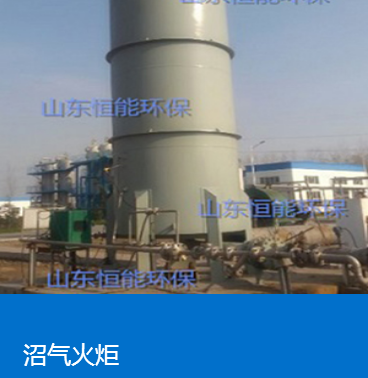沼氣脫硫劑在使用過程中,其床層內(nèi)硫的軸向可分為3個(gè)區(qū)域。如原料氣從上部進(jìn)入,則上層為飽和區(qū),隨著反應(yīng)的不斷進(jìn)行,區(qū)內(nèi)生成的硫化物量逐漸增加,而反應(yīng)逐漸減慢,飽和區(qū)高度隨著脫硫時(shí)間增長而增加。中層為傳質(zhì)區(qū)(主要反應(yīng)區(qū))該反應(yīng)相當(dāng)迅速,直至達(dá)到平衡濃度。下層為清潔區(qū),也就是沒有與H2S反應(yīng)過的新鮮氧化鐵脫硫?qū)印kS著脫硫時(shí)間的增長,整個(gè)軸向分布逐步向下移動(dòng),直至清潔區(qū)消失,出氣口泄硫,當(dāng)出氣口硫化氫含量大于工藝指標(biāo)時(shí),即為穿透。影響脫硫反應(yīng)的主要因素除沼氣脫硫劑本身性質(zhì)外還有以下一些因素:
During the use of biogas desulfurizer, the axial direction of sulfur in the bed can be divided into three areas. If the feed gas enters from the upper part, the upper part is a saturated zone. With the continuous reaction, the amount of sulfide generated in the zone gradually increases, while the reaction slows down. The height of the saturated zone increases with the increase of desulfurization time. The middle layer is the mass transfer zone (the main reaction zone). The reaction is quite rapid until the equilibrium concentration is reached. The lower layer is a clean area, that is, a fresh iron oxide desulfurization layer that has not reacted with H2S. With the increase of desulfurization time, the whole axial distribution gradually moves downward until the clean area disappears and the sulfur is released from the gas outlet. When the hydrogen sulfide content at the gas outlet is greater than the process index, it is penetration. In addition to the nature of the biogas desulfurizer itself, the main factors affecting the desulfurization reaction include the following factors:
(1)煤氣中其它雜質(zhì):煤氣中的焦油、萘、灰塵等雜質(zhì),會(huì)使沼氣脫硫劑結(jié)成硬塊,導(dǎo)致箱內(nèi)阻力升高,脫硫效率下降,沼氣脫硫劑使用壽命降低。煤氣中的含氨量過多或過少時(shí),均將使沼氣脫硫劑處于酸性狀態(tài),引起脫硫效率下降。
(1) Other impurities in the gas: tar, naphthalene, dust and other impurities in the gas will cause the biogas desulfurizer to form hard blocks, resulting in increased resistance in the box, decreased desulfurization efficiency and reduced service life of the biogas desulfurizer. When the ammonia content in the gas is too much or too little, the biogas desulfurizer will be in an acidic state, resulting in the decline of desulfurization efficiency.
(2)溫度
(2) Temperature
溫度對(duì)脫硫效率影響很大,溫度過高(40℃一50℃),將使氧化速度大大快,相對(duì)降低了硫化氫的反應(yīng)速度,還會(huì)使Fe2S3?H2O失去所帶水分而成為不帶水Fe2S3;在氧化時(shí)將產(chǎn)生硫酸鹽,從而使沼氣脫硫劑呈酸性。溫度過低時(shí),將大大降低沼氣脫硫劑與硫化氫的反應(yīng)速度,煤氣中的水分也因溫度過多而冷凝下來,使脫硫效率下降。
The temperature has a great influence on the desulfurization efficiency. If the temperature is too high (40 ℃ - 50 ℃), the oxidation speed will be greatly faster, the reaction speed of hydrogen sulfide will be relatively reduced, and fe2s3? H2O loses water and becomes fe2s3 without water; Sulfate will be produced during oxidation, which makes the biogas desulfurizer acidic. When the temperature is too low, the reaction speed between biogas desulfurizer and hydrogen sulfide will be greatly reduced, and the water in the gas will condense due to excessive temperature, which will reduce the desulfurization efficiency.

(3)水分
(3) Moisture
適量的水分在沼氣脫硫劑中的作用有:
The role of appropriate amount of water in biogas desulfurizer is as follows:
1) 能保持硫化氫與氧化鐵足夠的接觸時(shí)間
1) Sufficient contact time between hydrogen sulfide and iron oxide can be maintained
2) 是免除沼氣脫硫劑結(jié)塊的因素之一
2) It is one of the factors to avoid agglomeration of biogas desulfurizer
3) 能溶解一部分在凈化過程中所產(chǎn)生的鹽類,這些鹽類大部分包裹在氧化鐵的表面,影響脫硫效果。
3) It can dissolve part of the salts produced in the purification process. Most of these salts are wrapped on the surface of iron oxide, affecting the desulfurization effect.
(4)含氧量
(4) Oxygen content
煤氣在進(jìn)入脫硫箱前含有一定量的氧氣,使箱內(nèi)硫化鐵得以再生至一定程度,有利于延長脫硫劑的使用周期。但若含氧量過高能加速對(duì)鐵板的腐蝕和生成煤氣膠;過低時(shí)不利于沼氣脫硫劑再生。
The gas contains a certain amount of oxygen before entering the desulfurization tank, so that the iron sulfide in the tank can be regenerated to a certain extent, which is conducive to extending the service life of the desulfurizer. However, if the oxygen content is too high, the corrosion of iron plate and the formation of gas glue can be accelerated; Too low is not conducive to regeneration of biogas desulfurizer.
(5)pH值(酸堿度)
(5) PH value (PH)
因?yàn)閴A度對(duì)沼氣脫硫劑有穩(wěn)定的作用,在堿性適合的情況下Fe2S3?H2O能很好的氧化成為Fe203?H20,是優(yōu)良的脫硫原料,在堿性環(huán)境下能加速氧化鐵和硫化氫之間的反應(yīng)速度。
Because alkalinity has a stable effect on biogas desulfurizer, fe2s3? H2O can be oxidized to Fe203? H20 is an excellent desulfurization raw material, which can accelerate the reaction speed between iron oxide and hydrogen sulfide in alkaline environment.
(6)煤氣在箱內(nèi)的流向?qū)γ摿蛐实挠绊?/div>
(6) Influence of gas flow direction in tank on desulfurization efficiency
煤氣在箱內(nèi)的流向,可分為向上、向下兩種。向上流阻力上升得快,煤氣須經(jīng)過柵格而進(jìn)入底層脫硫劑,造成底層析硫嚴(yán)重,所以阻力升高快。如果焦油脫除效果差,則底層沼氣脫硫劑迅速被粘住堵塞,影響脫硫效率。向下流阻力上升慢,但在阻力突然升高后,只需更換上層脫硫劑即可。
The flow direction of gas in the tank can be divided into upward and downward. The upward flow resistance rises rapidly, and the gas must pass through the grid and enter the bottom desulfurizer, causing serious sulfur in the bottom chromatography, so the resistance rises rapidly. If the tar removal effect is poor, the bottom biogas desulfurizer is quickly stuck and blocked, affecting the desulfurization efficiency. The downward flow resistance rises slowly, but after the resistance rises suddenly, it is only necessary to replace the upper desulfurizer.
本文的精彩內(nèi)容由
生物脫硫提供知識(shí)提供,本網(wǎng)站還有很多的精彩內(nèi)容,更多的內(nèi)容您可以點(diǎn)擊進(jìn)入:
http://usacato.cn我們有專門的客服為您解答問題
The wonderful contents of this article are provided by the knowledge provided by biological desulfurization. There are many wonderful contents on this website. You can click to enter more contents: http://usacato.cn We have special customer service to answer your questions
